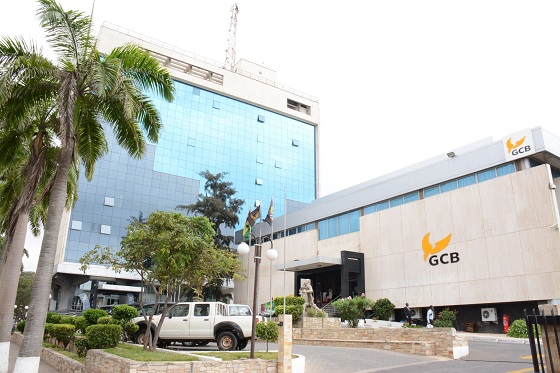GCB Bank Plc has overtaken Ecobank Ghana Limited (EBG) as the biggest bank by assets in an alternating battle for the top spot that has seen the two institutions occupy the prestigious position equally over the past six years.
GCB Bank’s assets strengthened to GH¢18.26 billion in 2021 to surpass those of Ecobank, which ended the year at GH¢17.93 billion.
The growth in the assets was driven by treasury (T) bills and bonds, and loans and advances, among other things.
A survey by accounting and auditing firm, PricewaterhouseCooper’s (PwC), showed that while GCB Bank’s assets accounted for 10.7 per cent of the banking sector’s total assets for 2021, Ecobank’s assets were equivalent to 10.2 per cent in the year under review.
Absa Bank Ghana Limited (ABSA), Stanbic Bank Ghana (SBG) and Fidelity Bank Limited (FBL) were the next largest banks by assets in that order, according to the 2021 PwC Banking Survey report Wednesday.
READ ALSO: GCB tops at Ghana Club 100 Award
Drivers
The PwC report said the growth in the assets of the top five banks was driven largely by investment in liquid assets such as the government treasury bills and bonds, and loans and advances and improvements in cash balances financed by growth in liabilities such as deposits and borrowings.
“The government securities increased by GH¢8.3 billion, loans and advances by GH¢2.7 billion and cash assets by GH¢1.8 billion representing a growth of 30 per cent per cent, 10 per cent and 10 per cent respectively,” the report said.
Implications
Banks’ assets largely comprise loans and advances, investments and cash and cash equivalents that the lenders directly deploy to generate interest income or related fee income.
To a large extent, the size of the assets determines the leverage that a bank has when it comes to generating income and maximising profit and efficiency.
GCB’s return to the top spot is the first since 2019 after it lost the position to Ecobank in that year.
A largely indigenous bank, GCB Bank was the largest bank in the country for a long time until 2012 when Ecobank’s assets shot up tremendously after it successfully took over the now defunct The Trust Bank (TTB).
Since then, the two banks have been neck to neck for the top spot.
GCB Bank’s takeover of the good assets and liabilities of the defunct UT and Capital Banks, however, strengthened its asset base.
First quartile banks
The PwC report said GCB, EBG, ABSA, SBG and FBL maintained their positions as first quartile banks with 46.5 per cent of the industry’s total operating assets.
“Their total operating assets grew by 21.2 per cent to GH¢74 billion compared to a 15.5 per cent growth in 2020.
“FBL and ABSA significantly contributed to the 2021 increase in total operating assets,” the report said.
It noted that Fidelity Bank recorded the highest growth of 45.5 per cent to replace Consolidated Bank Ghana Limited (CBG) as the fifth bank in terms of operating assets.
It said ABSA, GCB, EBG and SBG also increased their operating assets by 27.6 per cent, 20.3 per cent, 12.2 per cent and 8.7 per cent respectively.
Second quartile
The report said the second quartile consisted of Standard Chartered Bank Ghana Limited (SCB), CAL Bank Limited, Zenith Bank Ghana Limited (ZBL), Access Bank Ghana (ABG) and CBG, which is the latest entrant.
It said the year-on- year growth in operating assets marginally declined from 20.9 per cent in 2020 to 20 per cent in 2021.
“All banks increased their operating assets in 2021, giving the quartile a total operating assets of GH¢44.4 billion.
“Although CBG held the largest operating assets in the group, it experienced the least growth during the year with 8.8 per cent. CAL and SCB led the growth by increasing their operating assets by GH¢2.2 billion (30.2 per cent) and GH¢2.1 billion (28.8 per cent) respectively,” the report said.
T-bills
Just like the assets of the first quartile banks, the report showed that investment in government securities and cash assets were the key drivers for the second quartile banks’ increase in operating assets.
“Both assets grew by 20 per cent, with government securities significantly increasing by GH¢5.1 billion,” it said.
--Graphic--





